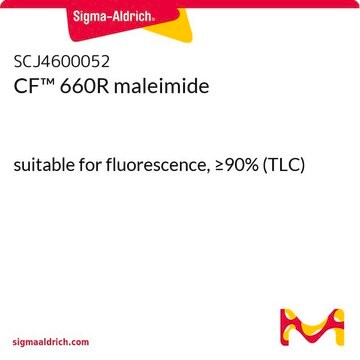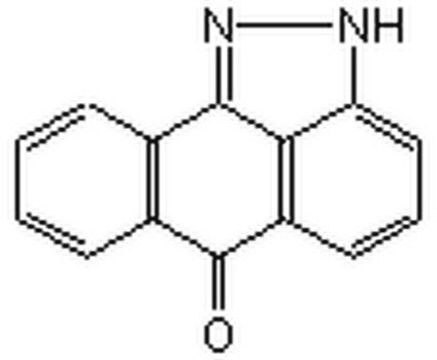S3388
Sulforhodamine 101 acid chloride
Technical grade
Sinónimos:
Sulforhodamine 101 sulfonyl chloride
About This Item
Productos recomendados
formulario
powder
composición
Dye content, ~75%
impurezas
~1 mol/mol chloroform as solvent of crystallization
solubilidad
methanol: 10 mg/mL
fluorescencia
λex 586 nm; λem 605 nm in H2O
aplicaciones
diagnostic assay manufacturing
hematology
histology
temp. de almacenamiento
−20°C
cadena SMILES
[O-]S(=O)(=O)c1cc(ccc1C2=C3C=C4CCC[N+]5=C4C(CCC5)=C3Oc6c7CCCN8CCCc(cc26)c78)S(Cl)(=O)=O
InChI
1S/C31H29ClN2O6S2/c32-41(35,36)20-9-10-21(26(17-20)42(37,38)39)27-24-15-18-5-1-11-33-13-3-7-22(28(18)33)30(24)40-31-23-8-4-14-34-12-2-6-19(29(23)34)16-25(27)31/h9-10,15-17H,1-8,11-14H2
Clave InChI
MPLHNVLQVRSVEE-UHFFFAOYSA-N
¿Está buscando productos similares? Visita Guía de comparación de productos
Descripción general
Aplicación
Ligadura / enlace
Palabra de señalización
Danger
Frases de peligro
Consejos de prudencia
Clasificaciones de peligro
Carc. 2 - Eye Irrit. 2 - Repr. 2 - Skin Irrit. 2 - STOT RE 1
Código de clase de almacenamiento
6.1D - Non-combustible acute toxic Cat.3 / toxic hazardous materials or hazardous materials causing chronic effects
Clase de riesgo para el agua (WGK)
WGK 3
Punto de inflamabilidad (°F)
Not applicable
Punto de inflamabilidad (°C)
Not applicable
Certificados de análisis (COA)
Busque Certificados de análisis (COA) introduciendo el número de lote del producto. Los números de lote se encuentran en la etiqueta del producto después de las palabras «Lot» o «Batch»
¿Ya tiene este producto?
Encuentre la documentación para los productos que ha comprado recientemente en la Biblioteca de documentos.
Los clientes también vieron
Nuestro equipo de científicos tiene experiencia en todas las áreas de investigación: Ciencias de la vida, Ciencia de los materiales, Síntesis química, Cromatografía, Analítica y muchas otras.
Póngase en contacto con el Servicio técnico












